Citizen Kane Blu-ray Movie
HomeCitizen Kane Blu-ray Movie 
Ultimate Collector's Edition | The Magnificent Ambersons DVDWarner Bros. | 1941 | 119 min | Rated PG | Sep 13, 2011
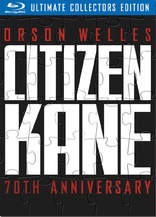
Movie rating
8.7 | / 10 |
Blu-ray rating
| Users | 4.5 | |
| Reviewer | 5.0 | |
| Overall | 4.5 |
Overview
Citizen Kane (1941)
Chronicling the stormy life of an influential publishing tycoon, when he dies news reporters scramble to discover the meaning of his final utterance.
Starring: Orson Welles, Joseph Cotten, Dorothy Comingore, Agnes Moorehead, Ruth WarrickDirector: Orson Welles
| Drama | 100% |
| Period | 35% |
| Mystery | 18% |
Specifications
Video
Video codec: MPEG-4 AVC
Video resolution: 1080p
Aspect ratio: 1.37:1
Original aspect ratio: 1.37:1
Audio
English: DTS-HD Master Audio Mono
Portuguese: Dolby Digital Mono
Polish: Dolby Digital Mono
Subtitles
English SDH, French, Portuguese, Spanish, Czech, Greek, Hungarian, Polish, Romanian
Discs
50GB Blu-ray Disc
Four-disc set (1 BD, 3 DVDs)
Packaging
Slipcover in original pressing
Playback
Region free
Review
Rating summary
| Movie | 5.0 | |
| Video | 4.5 | |
| Audio | 3.5 | |
| Extras | 4.5 | |
| Overall | 5.0 |
Citizen Kane Blu-ray Movie Review
This Amazon Exclusive offers everything in the fantastic Warner release, plus one of the most sought after DVD releases ever.
Reviewed by Jeffrey Kauffman September 15, 2011Rosebud.
Has any one word so defined the filmic landscape as that hoarse whispered enigma Orson Welles utters in the opening moments of Citizen Kane? No, spoilers will not be forthcoming in this review, as solving the mystery of “rosebud” is one of the enduring joys of any true film lover’s experience with the medium. But that central mystery and the quest to solve its meaning which shapes the narrative drive of this film is only one of manifold joys that Citizen Kane offers any astute viewer. Welles was a brash young iconoclast with a mighty fancy new toy, and he and cinematographer Gregg Toland wasted no time in exploiting every nook and cranny that the movies had to offer. Citizen Kane is such an astounding feat of technical genius that its innovations are accepted today as rote clichés for movies, but in 1941 critics (perhaps spurred on by William Randolph Hearst, who didn’t exactly take kindly to seeing his life story parodied) took Welles to task for doing all sorts of then unheard of things like shooting interior sets to show their ceilings or deconstructing a storyline with multiple points of view (years before Rashomon it should be pointed out). Citizen Kane is such a bracing experience that for obsessive-compulsive film lovers it holds such a special place that many fans can recount exactly where and when they first saw it, certainly something that is increasingly rare in this day of prefabricated pabulum manufactured from paint by numbers kits and screenwriting seminars. Though Kane was rightly appreciated by the intelligentsia of its day, and most especially by film craftsmen who instantly realized what a defining breakthrough it was in any number of ways, this is a film which has only gained luster in the intervening decades. Nothing can seemingly dim the fierce, brilliant light of Citizen Kane, and a whole new audience is now set to remember their first time with Charles Foster and his cohorts as one of the giant icons of the Golden Age of Hollywood finally debuts on Blu-ray.
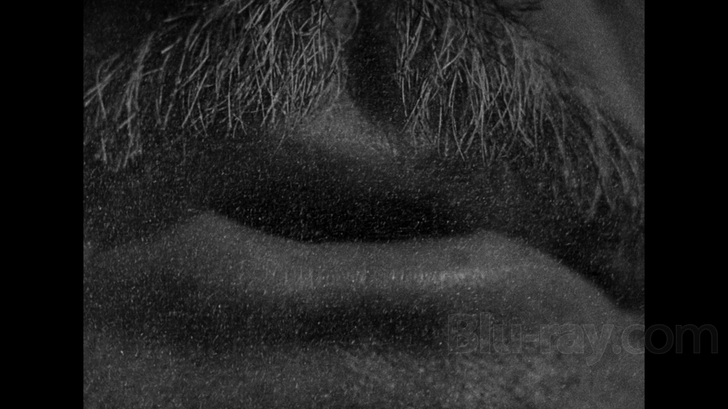
Where does one begin with a critical analysis of what is generally regarded as the greatest film of all time? (With no disrespect intended to our generally very knowledgeable readership here at Blu-ray.com, I was actually gobsmacked a few days ago when I read a post from a reader claiming that more people “cared” about a recent catalog release of middling import than they ever would about Citizen Kane). Having seen the film countless times over the years, let me just impart a few random thoughts that occurred to me this time. First of all: that title. It has become such a part of the public lexicon that people don’t even think about it anymore. But how subtly ironic are Welles and co-screenwriter Herman J. Mankiewicz being with calling the film Citizen Kane? Consider just for a moment the “democratizing” aspect of the word ‘citizen.’ It’s a term which evens the playing field, as it were, as citizenship is a birthright (not a privilege) granted every natural born member of our society. And yet, is there any character less “regular” than Charles Foster Kane? In fact the whole film is a testament to the larger than life aspect of Kane, despite his tendency toward favoring the “little guy.”
And how bracing is this film’s iconic structure? Especially when one considers the fact that it came along in 1941, the absolute apex of traditional narrative form in Hollywood, if not elsewhere. We get our opening gambit of the elderly Kane dying, with that most resonant word in the entire history of film, and then, as if Welles and Mankiewicz are cats playing with an audience made of a ball of yarn, we’re thrust headlong into a supposedly “objective” newsreel recounting the major plot points we’re about to see unfold from a variety of different perspectives. And then even that conceit—the newsreel itself—turns out to be a cheat of sorts, as we soon find out we’re actually seeing the newsreel being watched by reporters on a mission to ferret out the real story of Charles Foster Kane.
As incredible as the most visceral elements of Kane are—the fractured multi-character perspectives, the narrative ping-ponging, the astounding deep focus and oddly skewed camerawork of Toland—there are a number of perhaps more subtle contributions that Welles made to the art of film which are just as effective but sometimes less noticed. Stepping away from the more often cited contributions of Toland’s achievement but staying with cinematography for a moment, literally decades before “jiggly” handheld camerawork became the (often nausea inducing) norm, Welles and Toland introduce brief elements of the technique early in the film to give us a sense of surreptitious footage of an elderly Kane holed up in his palace-prison Xanadu. But move on to sound design and there are whole new sonic vistas to experience when watching (and listening) to Citizen Kane. Pay attention for example to the superb use of overwhelming reverb as reporter Thompson wanders into the cavernous site of the Thatcher Archives. And later listen to the fascinating sound mixing late in the film when Kane and Susan have their final showdown. What exactly is going on with the screaming, laughing woman only heard in the background? And though Howard Hawks is often credited with “inventing” rapid fire overlapping dialogue, listen to how often Welles employs the device throughout the film. Also pay attention to how effortlessly Welles and Mankiewicz segue from time period to time period—often midsentence—supported by the artistic editing of a relative newcomer who would soon become an iconic director himself, Robert Wise.
The most refreshing thing about Citizen Kane is how resilient the film is to repeated viewings. In fact there are very few films which hold up so brilliantly to revisiting, and Kane tends to reveal new details virtually every time it’s watched. The film is such a riot of technical invention that it’s sometimes easy to forget how brilliantly performed it is by a handpicked cast of Welles’ Mercury Theater collaborators, most of whom are doing their first film roles here and many of whom (Joseph Cotten, Agnes Moorehead) would go on to iconic careers of their own. Welles of course was an inarguable genius who burned brightly, perhaps too brightly for his own good, burning out in a mad combustion of hubris, stubbornness and an unwillingness to realize that today’s wunderkind is tomorrow’s persona non grata, at least within the cliquish confines of the film industry. But for a brief, shining moment, Orson Welles was the Golden Boy of Hollywood, and Citizen Kane is a triumph of almost unimaginable proportions, one which rightfully rests high atop its own mountaintop fortress, immune from the ravages of time and reassessment.
Citizen Kane Blu-ray Movie, Video Quality 
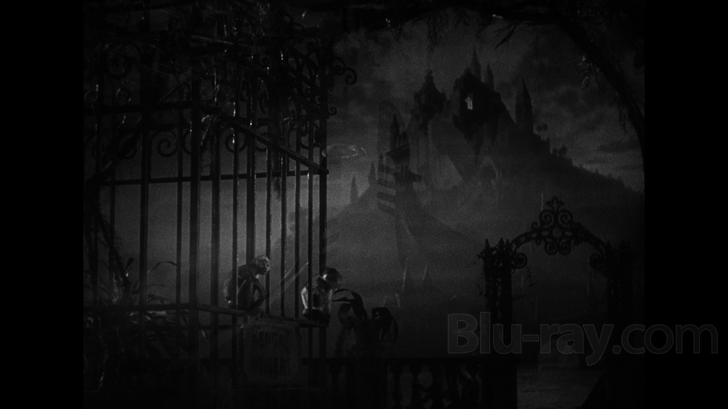
Warner once again does itself proud with a stunning high definition restoration and presentation of a catalog title, one of the crowning jewels in its assets catalog. Previous home video releases have been roundly criticized (sometimes fairly, sometimes not), but Citizen Kane's brand new AVC encoded 1080p transfer in 1.37:1, mastered from a 4K restoration of original nitrate elements, should satisfy all but the most diehard, picayune-obsessed complainers. Many people have bitched and moaned about the very dark image quality of much of Kane on both VHS and DVD, without realizing that's exactly what Welles and Toland were going for. These two were experimenting with chiaroscuro years before any Johnny come lately auteur had even thought of it. The Blu-ray presents this shadowy world with gorgeously rich black levels and abundant shadow detail, which is not to say viewers are suddenly going to see William Alland's face all of a sudden, to give one salient example. But what amazing detail and what a refreshing lack of compression artifacts. Usually tricky items like chain link fences and palm fronds resolve with absolute clarity, and Toland's incredibly impressive deep focus work is delivered with jaw dropping intensity. The frequent use of back lighting offers an amazing display of gray scale and contrast and unlike the DVD, grain structure has not been erased to within an inch of its life and looks completely natural. There is some very minor ringing on just a couple of scenes but that is about the only issue of any kind with this release, and it's kind of churlish to even mention that, so minimal is it in the overall scheme of things.
Citizen Kane Blu-ray Movie, Audio Quality 

Say what you will about the Dolby process (and believe me, I hated its compressed highs long before it became fashionable due to my own recordings which were processed with noise reduction), it can hide a multitude of sins. Therefore, while a layer of aural shellack has been peeled away from Citizen Kane courtesy of this new lossless DTS-HD Master Audio Mono mix, that means some of the sonic warts can more easily be heard. There's some persistent distortion in the upper midrange that is especially noticeable early in the film, including the opening cues of Bernard Herrmann's iconic score, and, later, in Susan Alexander Kane's first appearance. That anomaly aside, which is no doubt endemic to the stems themselves, this is a brilliantly effective track, one that is surprisingly full sounding for its age. Especially impressive is Welles' incredible sound design (as noted above in the main body of the review), which gets a sparklingly clear reproduction here. Thankfully no faux surround mix has been attempted, and while that may give the film a slightly more claustrophobic sonic quality than some would like, fidelity is generally very strong here, with no egregious dropouts and even better no overwhelming hiss despite the lack of that Dolby masking on the high end.
Citizen Kane Blu-ray Movie, Special Features and Extras 
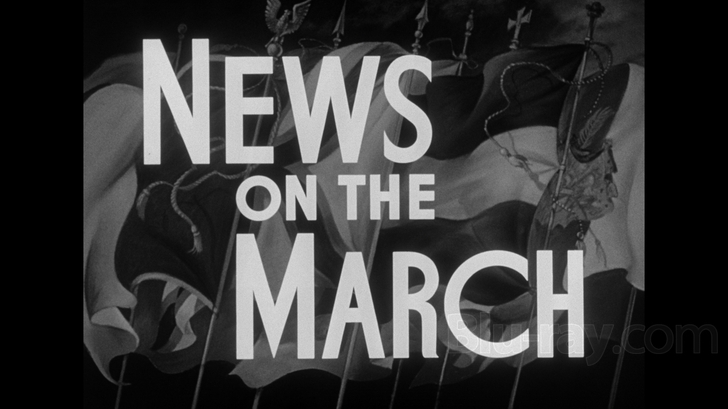
Amazon's exclusive edition contains the much sought after DVD release of Welles' follow up to Citizen Kane, The Magnficent Ambersons.
The Magnificent Ambersons
Movie: 4 stars
Video: 3.5 stars Note: Screenshots 21-25 of this review are from The Magnificent Ambersons.
Audio: 3.0 stars
Somewhere tucked away on a dusty shelf, long forgotten and perhaps never to be found, one of the great lost relics of the Golden Age of Hollywood may await an unexpecting interloper—in Brazil, of all places. In the land of Carnaval, Samba and Bossa Nova, rusting film canisters with probably decaying film stock may lie as they have, untouched by decades. For it was to Brazil that RKO sent a print of the original rough cut of The Magnificent Ambersons, Orson Welles' acclaimed follow up to his epochal Citizen Kane. Welles had always been a combination of wünderkind and enfant terrible, melding traits of those two terms about as well as their languages' native countries ever have (which is to say not too well, as any student of world history will tell you), and RKO had fairly quickly realized that it had given Welles the keys to the Hollywood kingdom without requiring much in return. In fact RKO's supposedly over-generous contract with Welles had infuriated executives at some of the bigger studios as they felt it set a dangerous precedent. After all, who were these mere "artists" to require things like "complete creative control"? And so when RKO was negotiating with Welles for a third feature (one which never saw the light of day), they extracted some important concessions from the auteur that had not been part of his Citizen Kane deal, and one of those was relinquishing rights to a final cut, a "right" which in those studio system driven days was virtually unheard of anyway. And that brings us back to those missing canisters which may hold one of the great unsolved mysteries in the entire history of film. RKO was not pleased with the screening audience reactions to that rough cut of The Magnificent Ambersons, and they promptly went about reediting and even reshooting sections of the film without Welles' involvement, since he was busy on a trip to Brazil working on a "good neighbor policy" project initiated by Nelson Rockefeller (yet another in the long line of Welles projects which was never successfully completed). For years film scholars and just ordinary curious fans have wondered what that initial rough cut must have been like. Even the assurances of editor Robert Wise, who was part of the coterie overseeing the reshoots and the tinkering with the original version, who has stated that the edited version is certainly no worse than the rough cut and may in fact be better, has failed to completely silence the din of completists who almost feel compelled to find and finally see Welles' original vision.
The Magnificent Ambersons even in its edited and revised form is one of the great glories of 1940's film and perhaps of film in general. It's as distinctly cynical as Citizen Kane, though in this case that can be traced to the source novel by Booth Tarkington, a novel which cast the rise of a new American industrial class and the death of an old, name-based American aristocracy as a cogent commentary of what was happening to the United States as a whole in the era between the end of the Civil War and the dawn of World War I. The Amberson family is the "old guard," a wealthy conglomerate whose wealth is never really explained, but is just kind of "there." Isabel Amberson (Dolores Costello) is perhaps a slightly silly young girl who is easily offended when her beau Eugene Morgan (Joseph Cotten) makes a literal misstep when courting her, and she puts the kibosh on his advances, instead marrying a "safe" but unspectacular Wilbur Minafer (Donald Dillaway in a role which doesn't even merit a credit, somewhat a propos considering Wilbur's transparent and inconsequential nature). As one of the gossiping townspeople mentions, that will spell certain disaster for any Minafer children, as Isabel, clearly not in love with Wilbur, will pour all her attention into her offspring. And that certainly is the truth, and even more so than perhaps thought of even by the gossipers, as the Minafers only have one child, the spoiled rotten snotty brat George (played by Tim Holt as an adult). George Minafer is one of the most unpleasant, unlikable main characters of any film of that era, and it's quite remarkable that Welles would be brave enough to build a film around him, even with the imprimatur of Tarkington's novel and its Pulitzer Prize winning status.
The bulk of the film takes place with George as an adult, falling in his own obnoxious way for Eugene's daughter Lucy (Anne Baxter), while attempting to keep Eugene, a widower, from his mother, who as the film progresses becomes a widow herself. Playing into this internecine and inter-familial drama is George's spinster Aunt Fanny (Agnes Moorehead in yet another absolutely incredible performance), a woman who once had eyes for Eugene herself but long ago recognized the inexorable magnetism between Eugene and Isabel. Fanny's not quite mute rage drives several emotional key points of the film, leading to some semi-tragic consequences.
While RKO imposed a somewhat happier ending on the film (which is nonetheless in line with Tarkington's original conception), The Magnificent Ambersons has the sadness of an elegy about it, as if Welles is writing the epitaph of an entire generation, indeed an entire socioeconomic era, in celluloid. Much like Kane, Ambersons is a film of long shadows and skewed angles, a film which exults in technique to highlight the suppressed emotions of many of its characters. Pay attention especially to the big party scene where George meets Lucy and marvel once again at the almost symbiotic relationship between Welles and his master cinematographer Stanley Cortez, as the camera weaves and darts through room after room and characters figuratively and literally waltz in from different angles, taking part for just a moment in conversations that overlap and intersect.
The Magnificent Ambersons, though, is perhaps an even darker meditation on American "success" than was Citizen Kane, if only because George is so completely despicable from the get go. Charles Foster Kane at least was idealistic and seemed to have a good heart, in the early going if not later in life. George Minafer is a punk, to put it bluntly, and the audience along with most of the major characters in the film are going to be waiting with baited breath for his (as Tarkington puts it) "comeuppance." That gives the film a rather depressive spiral that makes it one of the more curiously introspective—almost abstract expressionist—films of its era.
Fans have long clamored for a DVD release of this film, and Warner has finally relented with a bare bones edition that nonetheless presents the film from a generally decent looking print. Don't be concerned by the fuzziness of the opening sequence, as that is part of Welles' and Toland's vision, and in fact only the most attentive viewers may notice when the gauziness around the edge of the frame disappears. While the print does show occasional minor damage, on the whole it offers excellent contrast and very solid black levels. As with Kane, Welles and Cortez intentionally go for an incredibly dark look a lot of the time, so what would normally be termed crush is part and parcel of their vision, and this DVD represents that generally very well. The Dolby Digital mono soundtrack has a few niggling issues, notably some omnipresent hiss and narrowness in the higher frequencies, but it's largely free of any noticeable outright damage, and dialogue is always clear. Note the spoken credits at the end (another innovation by Welles), and the curious absence of a credit for Bernard Herrmann's score. When the film was reedited, Herrmann's score was tinkered with (and interpolated with other composers' work) too much for his comfort level and he demanded his name be removed from the film.
Warner has provided yet another deluxe package with an excellent assortment of supplements both on the Blu-ray and two DVDs included, as well as other print material included in the sturdy slipcase.
Blu-ray Supplements
- Commentaries by Roger Ebert and Peter Bogdanovich. There was some concern when the first press releases about the Ulimate Collectors Edition of Citizen Kane came out and the Ebert commentary wasn't included, but the good news is, it's here. Both of these commentaries are quite good, though Bogdanovich's can come off as a bit too self-congratulatory at times, given his long personal relationship with Welles. To be fair, though, Bogdanovich does impart an incredible amount of background information as well as technical detail. Ebert's commentary is more nuts and bolts, giving some great background, especially with regard to Toland's contributions.
- The Opening: World Premiere of Citizen Kane (SD; 1:08) is a brief snippet of a newsreel of the New York premiere at the Palace Theater on May 1, 1941.
- Interviews (SD; 8:44) with Ruth Warrick and Robert Wise are very interesting, part of the Turner Archival Project and coming from 1997 and 1994 respectively.
- Production (SD; 15:01) is subdivided into Storyboards, Call Sheets and Still Photography (with Commentary by Roger Ebert).
- Post Production (SD; 5:12) is subdivided into Deleted Scenes (no actual footage, just stills), Ad Campaign, Press Book and Opening Night.
- Theatrical Trailer (SD; 3:46) is as revolutionary in its own way as the film itself.
- The Battle Over Citizen Kane (1.33:1; 1:53:32) is the incredibly well done Oscar nominated documentary which aired as part of the American Experience series on PBS. This fascinating piece gives a huge amount of background information on both Welles and Hearst and shows how they were (as ironic as it may seem) peas in a pod. While Welles scholars have criticized this piece for making too much of the similarities between Welles and Hearst, it can't be denied that the two were self-absorbed pigheaded fools at times, something that actually led to detrimental results for both them, both within the context of the release of Citizen Kane, and beyond. That said, it certainly can't be argued that Welles was obviously way left of center politically and Hearst was just as obviously his polar opposite. Filled with enormous amounts of archival footage and stills, as well as copious interviews, The Battle Over Citizen Kane is documentary filmmaking at its finest, a compelling and unforgettable story told with a minimum of fuss and bother, and a lot of intriguing detail.
- RKO 281 (1.78:1; 1:26:47) is a well done HBO telefilm which is based in part on The Battle Over Citizen Kane. RKO 281 was the original in-house production number for Citizen Kane. Liev Schreiber does a good job as Welles and James Cromwell is excellent as William Randolph Hearst, though the film takes more than a few liberties with each man's life and it includes a fanciful one on one meeting between the two. Quite a bit of production information is imparted as the movie takes a look at the often revolutionary filming techniques Welles employed to achieve his vision. Melanie Griffith is not especially well cast as Marion Davies (and that bright red lipstick she wears seems to be oddly smeared across her face), but Roy Scheider makes an oddly compelling RKO chief George Schaefer. Note how director Benjamin Ross repeatedly apes Welles' own Kane approach, with an early newsreel sequence and lots of low angle shots revealing ceilings.
- Orson Welles Citizen Kane Hardback Book. This mini-book (roughly the size of a slimline DVD case) is printed on glossy paper and includes some great illustrations and photos, including storyboards, candids and scenes from the film. A brief overview of Welles and the film is also included.
- Reproductions of original key art and advertisements on cardstock
- Reproductions of several RKO letters and tangentially related paper from Welles and others
- Reproduction of Opening Night Souvenir Program
Citizen Kane Blu-ray Movie, Overall Score and Recommendation 
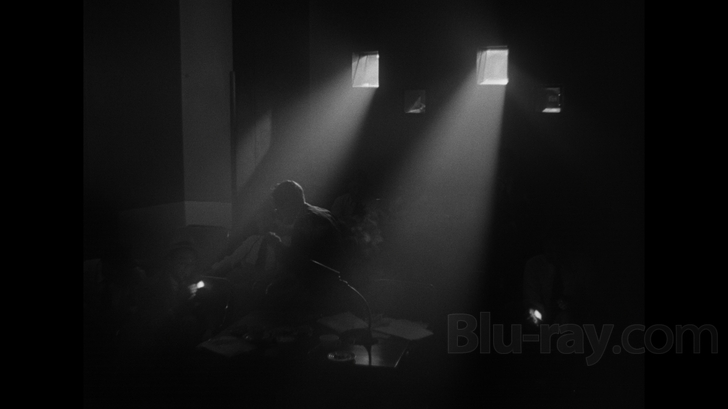
What can you say about Citizen Kane that hasn't already been said? Probably not much, except this: if you've never seen it, you are in for one of the grandest, most memorable film experiences of your life. For your first-timers, don't "think" too much as you watch, simply glory in the magnificence of the story and how it's told. But then go back (several times) and exult all over again at how incredibly brilliantly Welles and his team reinvented film, establishing "norms" that are utilized to this day. This Ultimate Collector's Edition is a very handsome package and it sports gorgeous video quality and very good audio quality. You probably can already guess Citizen Kane comes with my Highest recommendation.
Other editions
Citizen Kane: Other Editions

Citizen Kane 4K
2nd Corrected BD Pressing UPC Sticker 715515270113
1941

Citizen Kane 4K
First, incorrect BD, pressing UPC 715515266116
1941

Citizen Kane
75th Anniversary Edition
1941

Citizen Kane
2nd Corrected BD Pressing UPC Sticker 715515270212
1941

Citizen Kane
Ultimate Collector's Edition
1941

Citizen Kane
70th Anniversary Edition
1941

Citizen Kane
Incorrect BD First Pressing UPC 715515266215
1941
Similar titles
Similar titles you might also like

Once Upon a Time in America
1984

There Will Be Blood
2007

All the King's Men
2006

The Ides of March
2011

Nixon
Election Year Edition
1995

Ace in the Hole
1951

The Irishman
2019

Raging Bull
35th Anniversary Edition
1980

Submission
2017

A Face in the Crowd
1957

Pasolini
2014

Boogie Nights
1997

City of God
Cidade de Deus
2002

Sweet Smell of Success
1957

Great Expectations
2012

The Florida Project
2017

The Iron Lady
2011

Blonde Venus
1932

The Last Emperor
1987

Babylon 4K
2022